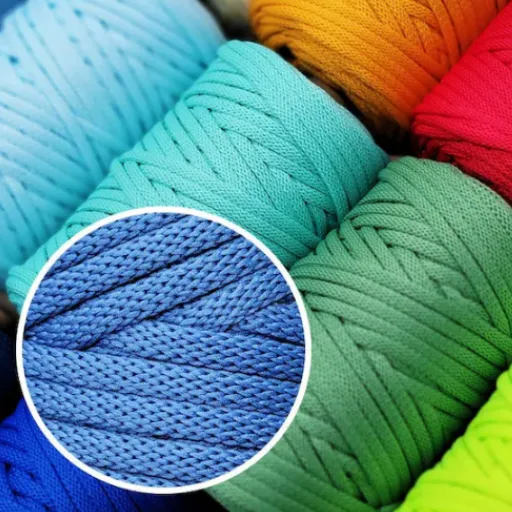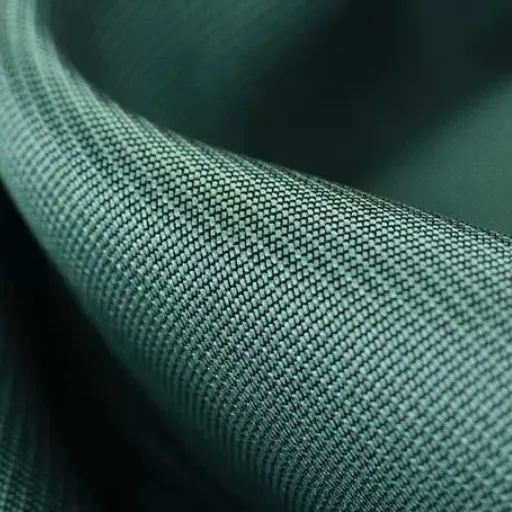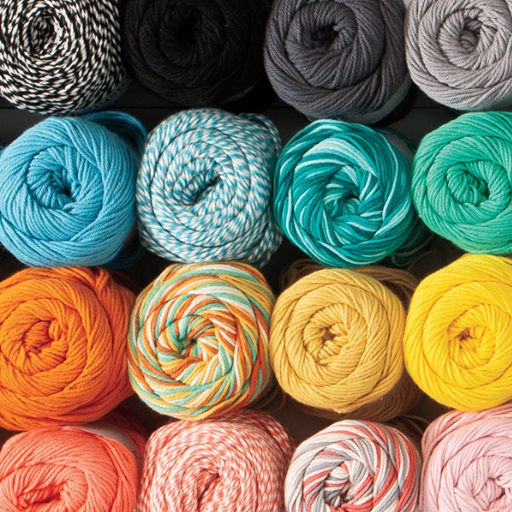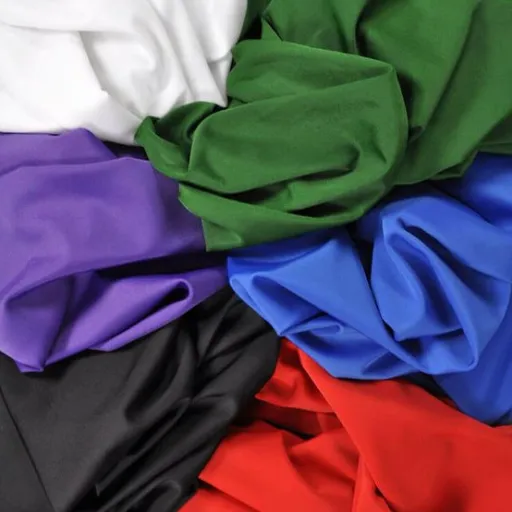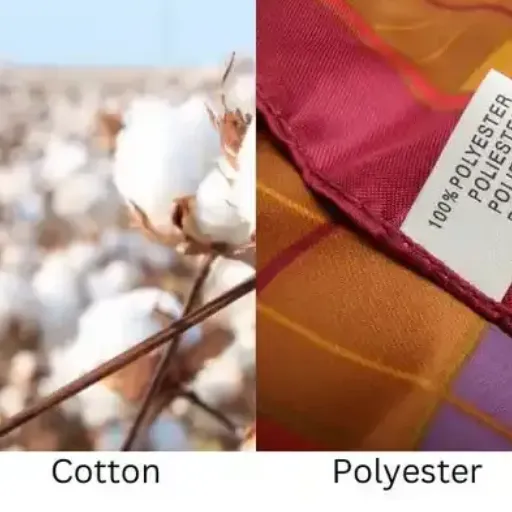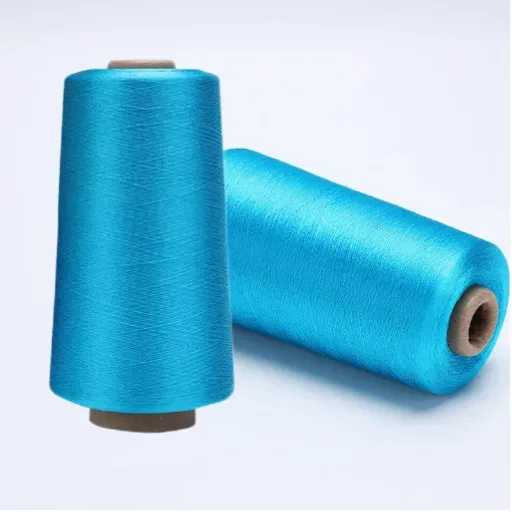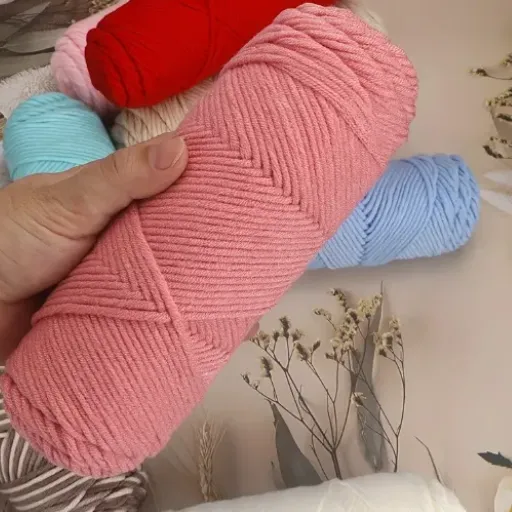Ceramics, Styles, and Designs are just some of the many fabric choices available in the textile world, with those similarities and differences often plateauing the realm of understanding an average buyer. What is viscose actually made of? Knowing the origin and composition of these fabrics is essential for anyone who wants to consciously choose any clothing or textile that is sustainable, stylish, and comfortable. In this article, they delve into the enchanting world of viscose, brushing upon everything from raw materials to production processes, to a comparison of viscose with its relatives, rayon, and lyocell. Whether you are passionate about fashion, advocating for sustainability, or just curious about the apparel you put on every day, this guide will open all those attic doors to the secrets of viscose and its current standing in the textile world.
Understanding Viscose and Its Production
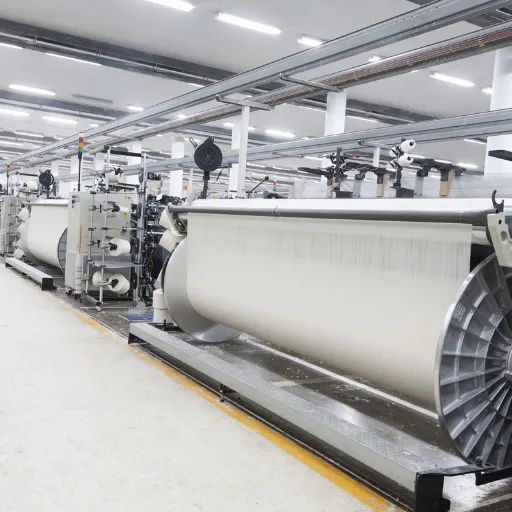
1The Inception of Viscose: A Historical Perspective
Viscose, also known as viscose rayon, originated in the late 19th century during the race to provide an inexpensive, multipurpose substitute for silk. In 1884, British chemists Charles Frederick Cross and Edward John Bevan, along with Clayton Beadle, found a way to manufacture cellulose-based fiber from wood pulp. The process, patented in 1892, would dissolve cellulose in a chemical solution to generate a thick liquid substance that would then be spun into fine fibers. It is from this viscous solution that the material takes its name.
The first decade of the 20th century saw a marked rise in the manufacture of viscose because it resembled silk and was cheaper. Considered revolutionary, it was soon taken up to an unprecedented extent in textiles for clothing, household fabrics, and industrial purposes. Different from natural fibers in its ability to be dyed and in its versatility, manufacturers were able to make textiles that were bright and lightweight.
Despite its success, in the past, its production had environmental concerns brought up from the chemicals used in the process, such as carbon disulfide and sodium hydroxide. From that point on, the present manufacturing improvements have attempted to mitigate those concerns. Today, viscose remains a popular material for textiles, sitting on the cusp of tradition and emerging sustainability endeavors. Viscose is famous for being so versatile and still has huge development being undergone for reducing its footprint on the environment.
2The Viscose Production Process Explained
The making of viscose starts with natural cellulose, usually from wood pulp. The cellulose is treated to give a white, purified substance called “sheets” or “cellulose sheets.” These sheets are steeped in sodium hydroxide, which breaks down the cellulose to a more reactive and workable state. This chemical treatment is paramount in preparing the material for subsequent processing stages.
The treated cellulose is then allowed to react with carbon disulfide to form cellulose xanthate. This is then dissolved in a sodium hydroxide solution to provide a viscous liquid; hence the name-vitriolic. The viscous liquid is filtered to rid it of impurities and is aged until perfectly suited for fiber spinning. This liquid is then pushed through a spinneret (a device with fine holes) into a coagulating bath which aids in the solidification of the fibers.
These fibers then undergo further finishing, such as washing, bleaching, and sometimes further chemical treatments, to improve their texture and functionality. Once completed, these fibers can be used for textiles. This complex process is chemistry and engineering melded to give us a fabric that finds use in various industrial sectors but has yet to be made completely eco-friendly.
3Different Types of Viscose: Rayon and Lyocell
Rayon and Lyocell are both types of viscose, but they differ in production methods and environmental impact. Being an early viscose fiber, rayon has been famed for its smooth texture and wide scope of applications. However, during its production, uncontrolled usage of some harmful chemicals like carbon disulfide is fairly common; the environment has often been the worst hit by such pollution.
On the other hand, Lyocell is the recent benign version of viscose. Lyocell production takes place in a closed-loop system that makes use of non-toxic solvents to dissolve the cellulose, wherein up to 99% of these solvents are recovered and reused. Therefore, it reduces waste much more than the traditional toxic production of rayon, thus lessening its hazardous impact upon the environment. Favorable aspects promoting demand for Lyocell include being strong, breathable, and capable of replicating the feel of natural fibers like cotton or silk.
Although rayon and lyocell are both common in textiles, the environment-conscious now favor lyocell more because of its sustainable production process and lesser ecological footprint. While both materials are derived from cellulose, their diverging production processes make lyocell the better choice for a consumer who consciously chooses better for the environment. Therefore, the distinction by which the materials are set apart requires an understanding of a material’s origin and production methods in order to make an ethically informed decision about textile usage.
Environmental Impact of Viscose Production
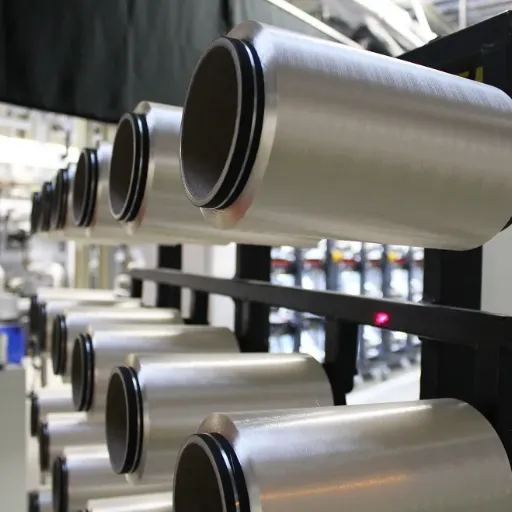
1Deforestation and Its Aftermath
The forest thinning has been an issue of serious environmental concern, especially in viscose manufacture. Large tracts of forests are felled to procure wood pulp, which is the raw material in production. The entire process destroys habitats of numerous species that depend on forest ecosystems for their survival. Hence, shortages in biodiversity kill balance in the act of maintaining a healthy environment.
The consequences of deforestation are no longer going to interfere with local ecosystems. Since forests are carbon sinks, this means that they absorb enormous amounts of atmospheric CO2. When large-scale tree felling takes place, the loss of this vital function occurs along with the ggrelease of carbon back to the atmosphere from the trees and bio-mass-based products in an indirect manner, thus contributing to the increase of global warming potential. This leads to climate change, whose secondary effects of more extreme weather and sea-level rise are felt in the pockets across the world.
Deforestation also affects the quality of land and water. The lands start to erode in the absence of trees whose roots firmly hold the soil. This further results in the highest degree of landlessness and all that is of fertile land, along with poor-working land for agriculture. This alongside an inhibition in forests regulate water cycles, on their removal, may:rises., in interruptions, fewer rains, and higher potentiality to floods. Therefore, it is high time that we should look for sustainable forestry practices that would bring even a little mitigation to the environmental impacts arising from viscose production.
2Chemical Usage in Viscose Production
Viscose production involves chemical processes that may have adverse environmental consequences. The process starts by treating cellulose, mostly obtained from wood pulp, with sodium hydroxide to create alkali cellulose. This intermediate is then mixed with carbon disulfide, turning it into cellulose xanthate, which is subsequently dissolved in sodium hydroxide to make viscose solution. All these steps involve chemicals that could be potentially dangerous if mishandled with relevance to environmental contamination.
A major concern in viscose manufacturing is carbon disulfide discharge since it is volatile and toxic. Extended exposure can impair human health and contribute to the pollution of air and water. Sodium hydroxide in combination with other chemicals used in the process, if discharged without proper treatment, lead to water toxicity. The above-stated environmental hazards emphasize the need for chemical recovery and wastewater treatment in viscose production.
Manufacturers should be encouraged to implement cleaner and sustainable methods, mitigating proximal hazardous chemical usage. For example, closed-loop production systems ensure that chemicals are captured and reused, significantly minimizing waste and emissions. Likewise, strict environmental regulations coupled with certification schemes can create incentives for environmentally benign methods, making the production of viscose less harmful to ecosystems, while satisfying demand across the world.
3Water Pollution and Its Effects on Ecosystems
Water pollution caused by viscose manufacturing is a real and serious threat to freshwater and marine ecosystems. During production, the discharge of harmful chemicals enters the water supply if not accounted for or contained. These pollutants can change water quality and the normal balance of aquatic ecosystems, causing a decrease in aquatic flora and fauna that require clean water for their survival.
Aquatic species get easily injured or endangered by toxic chemicals in viscose production. For example, such deadly substances diminish the oxygen availability in water for the fish and contaminate their food, thereby affecting the entire food chain-a second step beyond, thus impacting further on predators such as birds and mammals that depend therefrom.
The pollution of water does provide some concerns for human communities too, and thus myriads. Polluted water used for irrigation or for drinking purposes might toxinize the target population and lessen the safe resources. To this end, strict regulations must be enforced on the industry, and variegated-technological barriers for waste management techniques considered, whilst the viscose industry is committed to sustainable production practices.
Sustainability Efforts in the Viscose Industry
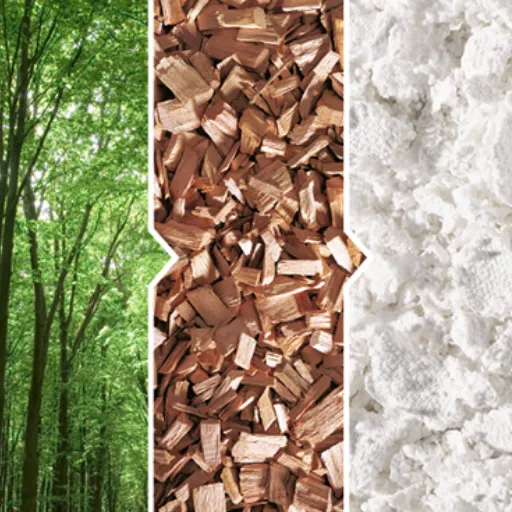
1Innovations in Sustainable Viscose Production
Going to improve sustainability in viscose production means reducing environmental impacts along all stages of the process. Among the innovation trends stands closed-loop systems. In such systems, chemicals can be recovered and reused, thus limiting their release into the environment and consequently minimizing water pollution and air pollution. Using this technology conserves resources and is hence technologically greener.
Apart from this, alternative feedstocks are being sought to lessen the dependence on wood pulp coming from the forest. For example, agricultural residues or recycled textiles are increasingly popular choices for sustainable raw materials. This type of innovation, therefore, pays the dual role of reducing pressure on natural forests and addressing very critical sustainability issues that are linked to viscose production: deforestation and loss of biodiversity.
Developments in wastewater treatment processes have improved so that water discharged from viscose plants is clean and safe. Using an advanced filtration system and biotreatment, these innovations provide efficient elimination of harmful contaminants from the final effluents, thus protecting aquatic life. All these activities play a very important part in redirecting the viscose industry toward sustainability and environmental responsibility.
2Certifications and Standards for Eco-Friendly Viscose
To make sure viscose is manufactured in a manner that is sustainable and environmentally friendly, certain certifications and standards are put in place. These certifications look at the whole production chain, from sourcing raw material to production processes, to ensure an ecologically low impact and ethical practices are followed.
One great certification is FSC (Forest Stewardship Council). The wood pulp for viscose production is certified to have been sourced from responsibly managed forests. These certifications ensure that deforestation is minimal, biodiversity is maintained, and local communities and workers have their rights upheld. PEFC (Program for the Endorsement of Forest Certification) serves a similar purpose of promoting sustainable forest management.
The other important standard is the EU Ecolabel, which measures a product’s environmental impact throughout its life cycle. For viscose, this entails reductions of emission, water use, and chemical management in its production. Following this kind of certification is a solid demonstration of a company’s ecological and ethical commitment, which should aid the consumers in making informed choices that are sustainable.
3Comparative Analysis of Viscose and Other Sustainable Fibers
When comparing viscose to other sustainable fibers like organic cotton, Tencel (lyocell), and hemp, some key issues have to be addressed: environmental aspects, uses of resources, and material properties. While it is technically a natural cellulose fiber, viscose is usually criticized because its production process has the possibility of using toxic chemicals and lots of water. However, one speaks of an environmentally friendly version of viscose with better chemical control, less emission, and so on, when one cites the EU Ecolabel.
Since organic cotton inhibits the use of synthetic pesticides and fertilizers, it would be considered better for the environment than conventional cotton. It also uses less water, assuming its growth is rain-fed. Then there’s the fact that organic cotton tends to demand more agricultural land and is energy-intensive in processing. Tencel (lyocell) is notable because it has the least environmental impact among those undertaken through closed-loop processes. It efficiently uses renewable resources and recovers most of the solvents during its production, making it a yardstick of sustainable production.
Then there is hemp, too, with its consumer appeal in durability and eco-friendliness. It uses less water, grows quickly, and resists pests on its own, eliminating the need for chemicals. Unfortunately, its coarse texture hampers its use for some clothes unless the fiber is combined with someone else. From a sustainability standpoint, however, hemp and Tencel simply work better than viscose, which holds value as a rather cheap and soft alternative offered with stricters certification labels like EU Ecolabel.
Applications of Viscose Fabric
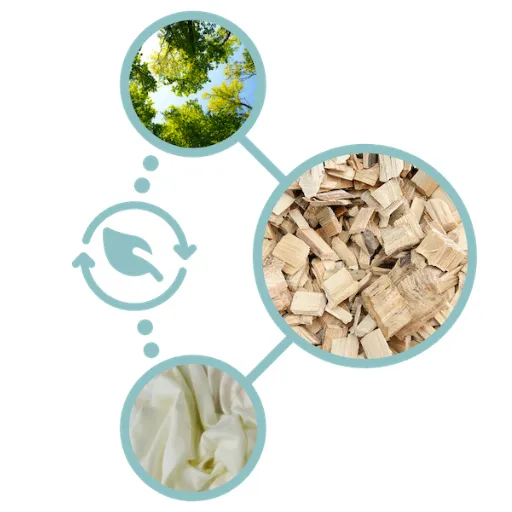
1Viscose in High-Fashion Textiles
Since this fiber is versatile and imitates the look and feel of higher-priced materials such as silk, it finds application in the high-fashion textile sector. Silk, along with viscose, is feared for its smooth surface and lightweight drape, thus making it suitable for evening gowns, blouses, and tailored clothes. Another consideration is the cost, with natural silk being costlier and thus less down-to-earth compared to viscose.
In terms of dyeing, its properties enhance its attraction for the high fashion. It takes up dyes perfectly to produce a myriad of colors so rich and patterns fine enough for statement pieces. Designers exploit this feature to produce collections with loud colors and elaborate prints. Furthermore, viscose blends well with other fibers, thus providing more design freedom and durability to high-end garments.
Like other textiles, viscose has its limitations, and these detract from its consideration in all but high-fashion applications. The downsides of its wrinkling, making, and wearing disadvantages and sensitivity to moisture are, however, partly resolved due to developments in finishing techniques and fiber-blending processes. Therefore, viscose remains a major component in today’s fashion.
2Everyday Garments: The Multifaceted Nature of Viscose
Viscose finds application in the realm of everyday garments owing to its properties of versatility, comfort, and aesthetic appeal. Being a semi-synthetic textile, it offers a soft texture akin to natural fibers such as cotton or silk and is thus fashionable for myriad garment types, including dresses, blouses, pants, and activewear. The textile breathes and feels light on the skin, keeping you comfortable in hot weather, while it offers a pleasing drape to enhance the look of the garment.
Yet another advantage of viscose lies in its adaptability to styles and trends. It is a fabric that can take up dye well; therefore, it can be made to have magnificent colors from intense hues to even more subtle patterns. It can also be blended with fibers such as polyester, spandex, or cotton that offer resistance, flexibility, or maintenance ease; thus, it is a fabric you will find being crafted into garments that fulfill both the functional and aesthetic needs.
One drawback of viscose, however, is its maintenance requirement. Although blending with other fibers has resulted in an increase in strength, pure viscose remains quite susceptible to wrinkling and damage from too much moisture. The garment will last longer if cared for properly by either placing mundane pieces in a handwash wash or taking special care with machine washing. Despite all odds, because of its applications, viscose may continue to see the limelight in fashion, especially when it comes to comfortable and stylish casual wear.
3Home Furnishings and Industrial Uses of Viscose
Viscose finds extensive application in the home furnishings arena due to its technical versatility and aesthetic characteristics. Its soft feel and ability to accept vivid colors make it desirable for upholstery, draperies, and pillow designs. These features enable designers to provide elegant yet comfortable living areas, right down to affordable production costs. Viscose blends are favored in the home furnishings industry, especially for its durability.
Industrial applications involve a whole range of scenarios beyond widowed and inward furnishings. Being largely absorbent and also soft to the touch, viscose is mostly employed to make non-woven fabrics, such as wipes and medical products. Viscose finds use also in the manufacturing of tire cords, its tensile strength providing structural integrity, particularly for high-performance applications.
There is a continuation of the use of viscose in domestic as well as industrial applications, by virtue of the uniqueness of the textile. Being cheap, plush, and functional, viscose will forever stand in range among high-end home textiles and basic industrial goods. As industries keep exploring sustainable alternatives, viscose remains an essential and versatile option from a diverse set of applications.
Pros and Cons of Viscose Fabric
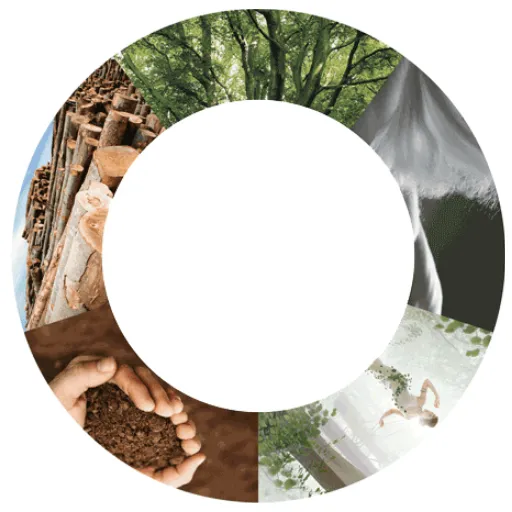
✓ Advantages of Using Viscose Fiber
Viscose fabric is preferred for its various advantages and fits well in both domestic and industrial applications. One of the foremost advantages is softness and comfort that very much resemble those of natural fibers of cotton or silk. Hence, viscose is used for making apparel, bed linen, and luxury textiles where softness and smoothness of the texture are greatly appreciated.
The second major advantage of viscose for utilization is that it can easily breathe. This fiber allows air to pass through, thereby keeping the material cool and suitable for warm climates or activewear. They are anti-microbial; they encourage the management of sweat, which makes them comfortable for the daily use.
In addition, viscose fabrics dry quickly and wind up being resold soon after. Applauded by the light and durable, each combines elegance and practicality. The fabric flows elegant elegant designs and bulky weight to be resilient against wear and tear. Hence, with its cheap prices, versatility, and functionality, viscose has been aiming for a spot in many industries.
⚠ Cons of Viscose Fabric: What to Consider
Undoubtedly, the viscose fabric offers many advantages, but it also has many disadvantages. The most important aspect is that it is easily damaged when subjected to water. It loses strength when wet, making it susceptible to shrinking, stretching, or even tearing if not gently treated. Cleaning viscose garments, therefore, is a task far more demanding than it is for other fabrics.
Another disadvantage of the viscose fabric is that the production process is harmful to the environment. Being natural cellulose-based, the serious chemical basis used in its production sometimes is not very environmentally friendly if not kept under strict control. This manufacturing practice emits pollutants at times and uses a lot of water, creating huge concerns for the sustainability of the fabric.
Another is facing the big problem of durability in extreme conditions. This fabric is heat sensitive and tends to pill from repeated uses. The color and finish are severely downgraded by pills over time, so it is unfit for heavy-duty application and less wearability in the long run unless careful maintenance is considered. Some of these factors set up a few trade-offs, which should be weighed by both consumers and manufacturers in preference of viscose fabric.
Viscose vs. Other Fibers: A Comparative Study
| Attribute | Viscose | Polyester | Cotton | Silk |
|---|---|---|---|---|
| Origin | Regenerated cellulose | Fully synthetic | Natural fiber | Natural protein fiber |
| Texture | Soft, similar to silk | Smooth, less breathable | Soft, breathable | Luxurious, smooth |
| Durability | Moderate, weak when wet | High resistance | Good, requires care | Strong, delicate |
| Breathability | Good | Poor | Excellent | Excellent |
| Cost | Affordable | Very affordable | Moderate | Expensive |
| Best For | Casual wear, draping | Activewear, durability | Everyday comfort | Luxury garments |
How do you put different fibers into comparison? There are a number of parameters-one study will tell you of the composition of the fibers; another will discuss the durability; yet there will be one addressing the application. Viscose gets appreciated for its soft texture, being close to natural fibers like cotton and silk, so it stands as a very cheap alternative if one is looking to create fancy apparel. Unlike polyester, which is a fully synthetic fiber, viscose is formed out of regenerated cellulose, and hence, it offers breathability and lightness particularly favorable in warmer climates.
But in fact, viscose is not quite as durable as synthetic fibers like polyester or nylon. While polyester resists well to abrasion, moisture, or stretching, viscose will tend to shrink, pill, and lose its shape under certain stress-a good example would be exposure to excessive moisture or heat. In this regard, even more so than cotton, viscose must be treated carefully, as repeated washing and daily wear drastically reduce its lifespan.
Silk has great strength as well as a natural origin when it comes to matchless softness and luster. The drawback is that it is rather expensive since viscose serves as a good-medium price-range alternative between synthetic durability and natural comfort. Therefore it depends upon the end customer: budget, purpose of use, and balance between appearance and functionality are some criteria that will determine one or the other.
Frequently Asked Questions (FAQ)
Viscose production is the process of manufacturing viscose fiber, an intermediary fabric made from sources of natural cellulose such as wood pulp, cotton linters, or bamboo. This involves dissolving cellulose in a chemical solution and regenerating it into rayon fiber.
The viscose process involves dissolving cellulose in carbon disulphide and sulfuric acid to form a viscous solution. This viscous solution gets extruded through spinnerets as rayon filaments, which are ultimately spun into fibers used in different textiles.
Viscose production can have environmental consequences, especially considering the use of hazardous chemicals like carbon disulphide. Meanwhile, the modern production of rayon aims to minimize environmental impact by adopting sustainable methods and using environmentally friendly sources of cellulose.
Standard viscose rayon is the most common type of rayon made from viscose. Two other types are cuprammonium rayon and nitrocellulose rayon produced by different chemical processes. Each type varies in its properties and uses in textiles.
Being soft and having a luxurious feel, viscose is often considered a close alternative to silk. It also cascades nicely and can imitate the look of silk, which allows popular usage in creating lightweight fabric that is affordable and versatile.
Rayon fabric is highly embraced by the fashion industry for making apparel, as well as home textiles such as curtains and upholstery. It can mix with other fibers like cotton and polyester to add to its versatility and popularity with fabric producers.
Rayon and acetate being both fiber-containing cellulose differ in their methods of production and properties. Rayon generally is made from a wider range of cellulose sources and offers a better moisture absorption, whereas acetate tends to be lighter and glassier in appearance.
Production of viscose fabric has been taking place in many parts of the world; however, most rayon factories are found in the Asia Pacific region. These factories employ high-class technology in commercially producing viscose and thus seriously contributing to the global supply of rayon fibers.
A viscose fabric is considered sustainable when cellulose is sourced responsibly and manufactured with responsible means. Fabrics from wood pulp or bamboo generated from responsible sources; however, viscose fabrics produced mainly through the extensive use of chemicals are considered unsustainable.
The production of viscose differs from natural fibers like, for example, cotton, in that it requires chemical treatment to dissolve the cellulose, whereas cotton is directly harvested from plants. The production methods for rayon, including viscose, are usually more intensive, but the fibers produced do exhibit unique qualities not entirely found in natural fabrics.
References
- → “How is Viscose Made?” – A detailed article on the viscose production process by APRayon. Read more here.
- → “What is Viscose Fabric? Exploring How It’s Made, Impact …” – A blog post by Dalston Mill Fabrics explaining the manufacturing process of viscose. Read more here.
- → “Viscose – an overview” – A scientific overview of viscose production on ScienceDirect. Read more here.
- → “What is Viscose Rayon Fabric and How is it Made?” – A blog post by Textile Yarn discussing the production and characteristics of viscose rayon. Read more here.
- → “A Novel Method of Jute Viscose From Jute Fiber and Its …” – A scientific article on viscose production methods published by Wiley Online Library. Read more here.








